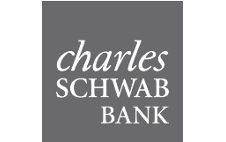At NerdWallet, we strive to help you make financial decisions with confidence. To do this, many or all of the products featured here are from our partners. However, this doesn’t influence our evaluations. Our opinions are our own.
Whether you apply for a bank account online or in person, you’ll need a government-issued ID and personal details, such as your Social Security number, on hand. You might also be asked to fund your account with an initial deposit.
Here’s what you need to open a new checking or savings account and what to expect during the process.
What you need to open a bank account
The information you’ll be asked to provide will be much the same, whether you’re opening a checking account, a savings account or both: You’ll need to provide a valid, government-issued photo ID, such as a driver’s license or a passport. Nondrivers can get a state ID card at the Department of Motor Vehicles office. You might also need to provide other basic information, such as your birthdate, Social Security number or phone number.
Some banks require an initial deposit, too. Skip ahead to read more about account funding.
You’ll need to provide a valid, government-issued photo ID, such as a driver’s license or a passport, or a state ID card from the Department of Motor Vehicles.
Depending on your circumstances, you might need a few other items, too:
Identification details for other applicants, if you’re opening a joint account: Because the account will be owned by multiple people, the bank will want all owners’ identification and personal information.
A co-owner if you’re not yet 18. Ask a parent or legal guardian to sign legal documents with the bank.
Know the basics: checking vs. savings
Choose checking if you want to:Choose savings if you want to:You can compare accounts side by side with NerdWallet’s list of top checking accounts and our best savings roundup.
» Need more detail? Read more about the difference between checking and savings accounts
There are other options if you’ve had trouble with banking in the past, you have poor credit or you’re not a U.S. citizen. If you’ve been denied a bank account, get a fresh start with a second chance checking account: See what’s offered in your area. And if you’re not a citizen, check out our financial guide for immigrants living in the U.S., including info on opening a bank account as an immigrant.
Need help starting your budget?
NerdWallet breaks down your spending and shows you ways to save.
Get started — it's freeFind a bank that suits your needs
If you’re willing to consider online-only banks, see our picks for best high-yield online savings accounts and best online checking accounts. Online banks tend to have lower fees and higher interest rates.
Here are a few of our favorite checking accounts.

Read Review
Capital One 360
- Flexible overdraft options, APYs starting at 0.20%

Read Review
Fidelity
- No monthly fees or minimum deposit, APYs starting at 0.37%

Read Review
Charles Schwab Bank
- Unlimited ATM reimbursements worldwide, 0.37% APY
What to expect when you open your new account
Applying for a new account usually doesn’t take very long, especially if you apply online. NerdWallet has found many accounts you can open in 15 minutes or less.
Some accounts don’t require you to make a deposit right away, but others require $25 to $100.
Some accounts don’t require you to make a deposit right away, but others ask that you have $25 to $100 on hand to open one. If you already have an account at a different bank or credit union, you can simply transfer money from that existing account into the new one. (Your original bank might charge for this transfer.) Otherwise, a check or cash will work.
Close your old account, if needed
Knowing how to properly switch banks can save you late fees and headaches. Address these items to make sure the transition is seamless:
Direct deposit: Give your employer your new account information.
Automatic bill payments: Cancel any old ones — whether in the bank’s own bill-pay platform or through, say, your cable provider’s website — and set up new ones with your new account information.
Cancel any automatic bill payments from your old bank and set up new ones with your new account information.
Recurring transfers and linked accounts: This could involve setting up a transfer between a new checking and an existing savings account, or making sure your PayPal, Venmo and other payment app information is up to date.
Smartphone apps, text banking and alerts: Download your new bank’s app, sign out of and delete your old one, and turn off any alerts you were receiving.
Paper checks: Destroy any leftover blank ones from the old account.
Safe-deposit boxes: If you’re cutting ties completely, collect your items in person and consult your rental agreement for specifics about closing out your box.
Get a written statement from your old bank confirming that your account is closed and ask about the bank’s account-reopening policies. Why? Some banks will reactivate closed accounts to honor automatic payments or receive deposits, putting you back on the hook for any fees.
No comments:
Post a Comment